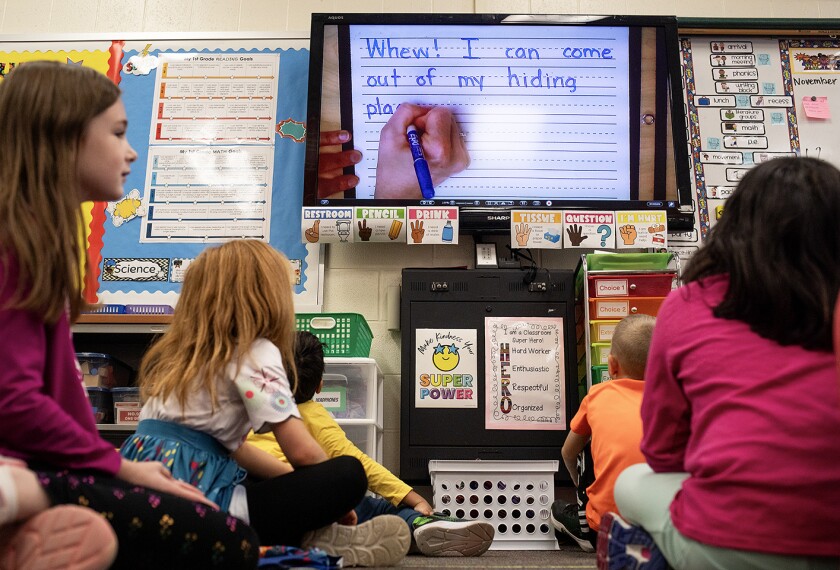From sniffing out phishing emails to crafting passwords for online bank accounts, understanding cybersecurity has become part of daily life.
Plus, jobs in cybersecurity offer a fast-growing career path, and expanding the sector is a national security imperative. (The White House recently held an event to draw attention to cybersecurity education.)
Already, almost half of educators surveyed in 2020 by the EdWeek Research Center—41 percent—said high schools in their districts integrate cybersecurity throughout their curriculum, and 18 percent said their high schools offer it as a standalone course.
Now, North Dakota is requiring all students master either cybersecurity or computer science content to graduate. Though at least five other states have made computer science a graduation requirement, the Peace Garden State is the first to add cybersecurity as an option, according to Code.org.
North Dakota is also calling for every school—from the elementary level up through high school—to offer some instruction in both subjects. The move has been in the works for eight years, said Kirsten Baesler, North Dakota’s superintendent of public instruction.
“My goal isn’t to say, ‘hey, I want to be the first,’” Baesler said in an interview. “I want it to be truly about preparing our young people for the world that they live in now.”
Students can meet the high school graduation requirement either through a standalone cybersecurity or computer science course, or a state-approved sequence of classes in which those topics are embedded, Baesler said.
The state’s move will help prepare students for a world in which professionals in all sorts of fields need some knowledge of cybersecurity, said Amy McLaughlin, the cybersecurity director for the Consortium for School Networking, which represents ed-tech leaders in K-12 school districts.
“The technology we use, the data we handle, is the foundation of almost every business process today,” McLaughlin said.
‘We cannot leave it up to chance and choice anymore’
North Dakota began working on a plan to make cybersecurity and computer science a major focus of its K-12 schools back in October 2015, said Baesler, who has been in office for a decade. In 2019, North Dakota adopted computer science and cybersecurity standards.
That same year, the state assembly allowed for a certification in computer science or cybersecurity to be added to teachers’ licenses. That will help North Dakota tackle one of the biggest barriers to expanding computer science and cybersecurity education nationally: a dearth of trained educators in those fields.
Though the state has encouraged schools to expand their computer science and cybersecurity offerings for years, making it a graduation requirement will ensure those efforts reach students from all backgrounds, Baesler said.
For instance, although the state has 14,000 Native American high school students—comprising more than 11 percent of the student population—just a small fraction, 133 students, have taken a computer science or cybersecurity course.
The state decided “this is an important enough skill that we cannot leave it up to chance and choice anymore,” Baesler said.
While she doesn’t expect every student to become a programmer or cybersecurity consultant, Baesler does see an economic upside to training students in her largely rural state for careers in two fast-growing fields in which workers are increasingly permitted to work remotely.
One of Baesler’s favorite data points: The state with the highest number of cybersecurity and computer science jobs is California, home to Silicon Valley. The second most popular location? Remote.
That means students who want to work in computer science or cybersecurity can “stay in North Dakota, earn tremendously strong wages, and build a career in their home community,” Baesler said.
The move is a smart one, though states like North Dakota will need to continue to invest in their broadband infrastructure if they want to attract or retain remote workers in high-paying fields, McLaughlin said.
“This is the door to keeping communities of rural America not just alive, but actually imbuing them with really good-paying jobs,” McLaughlin said. Increasingly, workers are “no longer required to live in a big city to be successful or have a great career.”






